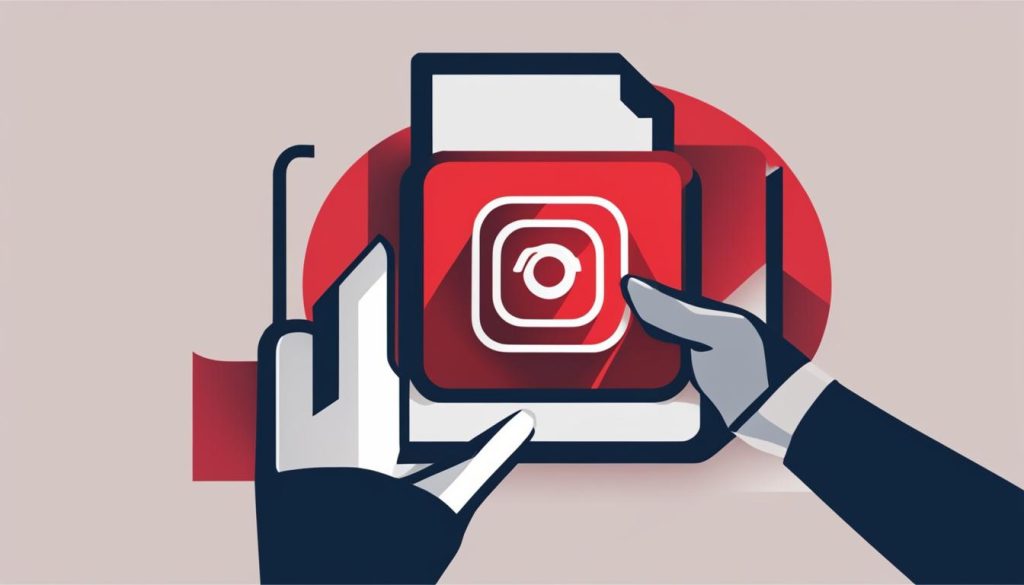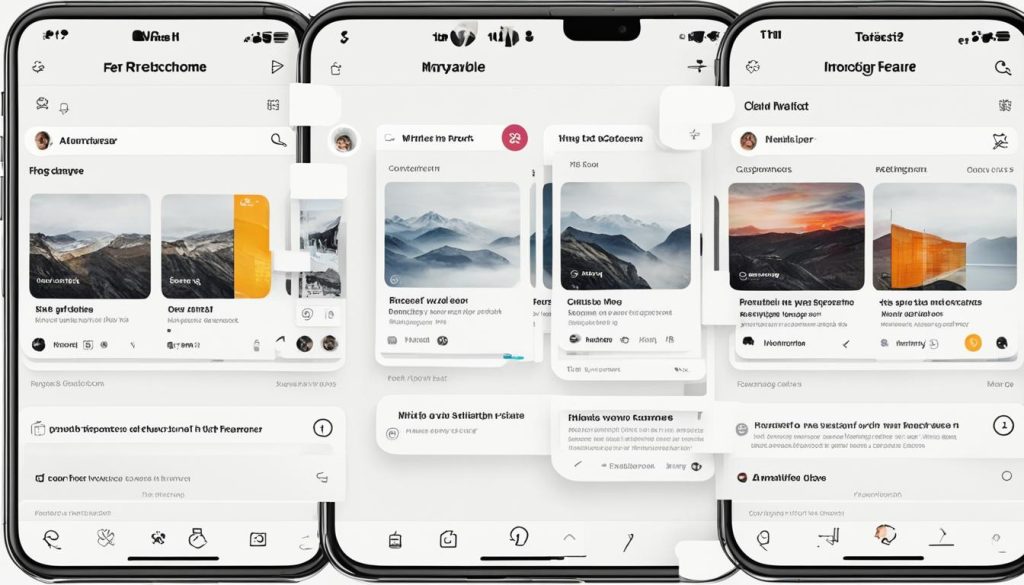Today’s social media environment demands a nuanced approach to privacy and interaction. On Instagram, the features to ‘restrict’ or ‘block’ a user serve as crucial tools for personalizing and managing your digital footprint. Understanding the distinction between these options can dramatically shape your Instagram user experience. ‘Restrict’ operates as a silent guardian, subtly shaping your social landscape without alerting the affected party, while ‘block’ Instagram serves as a digital drawbridge, severing ties and offering definitive social media control.
Whether you’re a concerned parent looking to manage access on Instagram for your child, or an individual seeking a healthier online ecosystem, learning the intricacies of these features becomes essential. Balancing the visibility of your activities with the quality of interactions on the platform, the choice made here can either be a whisper or a wave in your Instagram engagement—each with its ramifications and purposes.
Key Takeaways
- Comprehend the fundamental differences between restricting and blocking on Instagram.
- Leverage ‘restrict Instagram’ feature for subtle interaction management.
- Use ‘block Instagram’ to completely prevent access to your profile.
- Enhance your capacity to manage access on Instagram effectively.
- Gain insight into the tools available for enhanced social media control.
- Optimize the health and enjoyment of your personal Instagram user experience.
Understanding Instagram’s Restrict Feature
Instagram’s Restrict feature plays a pivotal role in safeguarding the social media experience, serving as a subtle form of Instagram parental controls. Designed with user welfare in mind, this feature offers the option to restrict Instagram accounts effectively, balancing online engagement with the need for personal space.
Origins as an Anti-Bullying Measure
Originally intended to combat cyberbullying, the Restrict feature on Instagram provides a way for users to protect themselves against unwanted interactions. By being able to limit Instagram usage without public knowledge, individuals can manage their accounts more privately, deterring negative behavior and promoting a positive social environment.
How Restricting Affects Comments and Messages
Restricting an account alters the visibility of comments and messages in significant ways. Comments from a restricted user will not be displayed publicly unless they receive explicit approval from the account holder. This discretion is particularly useful for those looking to control their digital space without triggering confrontations.
Furthermore, Instagram sorts direct messages from restricted users into the Requests folder. Not only does this preempt immediate engagement, but it also withholds ‘seen’ receipts, thus preserving the account owner’s privacy while affording them full control over when or if to respond.
Visibility and Privacy with Restrict Mode
Engaging the Restrict feature leads to a notable shift in an account’s privacy dynamics. The targeted users are not notified of their changed status, maintaining an unaffected user experience on their end while simultaneously fortifying the restrictor’s control over their own social media experience.
| Feature | Benefit |
|---|---|
| Comments Visibility | User controls the public visibility of a restricted user’s comments. |
| Messages Privacy | Messages land in Request inbox with no ‘seen’ status, until accessed. |
| Interaction Control | Account holder decides when or whether to interact with a restricted user’s content. |
| User Experience | Restricted user remains unaware, allowing for undisturbed social interaction. |
| Discretion | Control over one’s own content without overtly alienating other users. |
Restricting Instagram usage on mobile thus becomes a tactical approach to balance participation with boundaries. Whether it’s a parent aiming to limit Instagram usage time for their child, or any user seeking to curate their digital circle, the flexibility of the Restrict feature empowers a more secure, customizable social media experience.
For parents and users seeking to establish firm boundaries within the Instagram environment, understanding the block feature is essential. When you decide to block someone on Instagram, you effectively remove your online presence from their view. This could be a critical step in ensuring personal digital well-being, particularly when dealing with persistent unwanted interactions.

The Consequences of Blocking Someone
Implementing blocking Instagram on device entails comprehensive restrictions for the blocked user. They will no longer be able to view your photos, stories or profile updates. Direct interactions such as messages are also halted, thus ceasing any form of digital communication. This can be comforting for those seeking a resolute form of Instagram parental controls.
How Blocking Limits Interaction Completely
By choosing to block Instagram users, you are opting for the most definitive action available on the platform. This action makes you invisible to the blocked user, thus removing any possibility of them engaging with your content or tracking your online activity. It’s a straightforward and uncompromising method of ensuring privacy and peace of mind on social media.
| Action | Visibility | Communication | Profile Accessibility |
|---|---|---|---|
| Blocking on Instagram | Profile and content not visible | No direct messages or comments possible | User cannot find the blocker’s profile |
| Restricting on Instagram | Content visible, comments hidden | Messages sent to request inbox without ‘seen’ | Profile remains public to restricted user |
For those concerned about their children’s online exposure, or wishing to create a safer online space for themselves, how to block Instagram on router is also worth considering. This method goes beyond the app’s built-in features, as it enables users to prevent access to Instagram completely across all devices within the network, providing an additional layer of Instagram parental controls.
Restrict vs Block Instagram: Comparing the Features
Understanding the variance between restricting and blocking on Instagram is vital for users who wish to manage access to their digital presence. The choice between these options affects your Instagram user experience and the extent of social media control you exert. Here’s a breakdown of these two features:

| Feature | Restrict | Block |
|---|---|---|
| Visibility of Posts and Stories | Visible to the restricted user | Not visible to the blocked user |
| Commenting | User can comment, but visible only to them | Cannot comment |
| Direct Messaging | Messages are moved to message requests | Blocked from sending messages |
| Search Visibility | Profile remains searchable | Profile does not appear in search |
| Notification of Action | No notification sent to the restricted user | Blocked user is not notified but may notice |
When you restrict vs block Instagram users, the decision should be influenced by the degree of separation you’re aiming for.
Restricting serves as a soft barrier, subtly moderating interactions without the other party’s awareness—ideal for when you want to minimize conflict or avoid hurting someone’s feelings.
However, if someone is consistently infringing on your comfort or privacy, then
blocking
is a more concrete form of social media control, unequivocally ending all interactions and visibility between your profiles.
- Restrict if you prefer to stay under the radar while limiting interactions.
- Block if you require a complete cessation of all connections on Instagram.
Ultimately, whether you choose to restrict or block on Instagram, both features empower you to curate a safer and more enjoyable social media environment.
Guidelines on How to Restrict or Block Users
As you navigate the complexities of the digital world, it’s important to have control over your social media experience. Instagram has crafted features that allow you to manage interactions by either restricting or blocking other users. Understanding how to use these features can make your online experience more pleasant, giving you the power to filter who can engage with you on your terms. Let’s delve into the procedures for how to restrict Instagram access and how to block someone on Instagram to ensure you can maintain your peace while scrolling through your feed.
Step-by-Step Guide to Restricting Instagram Users
To restrict an individual’s account, Instagram has made the process remarkably user-friendly. You can begin by simply swiping left on one of the user’s comments or by going to their profile, hitting the three dots at the top, and selecting ‘Restrict’. This action can also be performed through your settings where you have comprehensive control over your restrict Instagram account preferences. The usefulness of restriction allows you to subtly decrease the visibility of someone’s interaction with your content without notifying them, a prime choice for those who prefer a discreet approach to social media control.
The Blocking Process on Instagram
When the time comes to block Instagram on a device, it is just as straightforward. Navigate to the user’s profile, tap the three dots, and press ‘Block’. For those wondering about how to block Instagram on router or computer, remember that app-based actions are generally not managed through external hardware or software but within Instagram itself. Blocking can be an instrumental aspect of Instagram parental controls, ensuring that the digital environment is safe and positive for all users. Whether you seek to block an individual from your virtual sphere or restrict their interaction capacity, Instagram makes these tools readily available, granting you the autonomy to shape your social media narrative.
FAQ
What is the difference between restricting and blocking someone on Instagram?
Restricting someone on Instagram is a subtle way to limit a person’s interactions with your account without their knowledge. When you restrict someone, their comments on your posts are hidden from the public view and direct messages from them are sent to your message requests. Blocking someone, on the other hand, completely prevents that person from seeing any aspect of your profile, your posts, stories, or sending you messages, effectively making your account invisible to them on Instagram.
Why was the Restrict feature introduced on Instagram?
The Restrict feature was introduced on Instagram as an anti-bullying measure. It allows users to privately limit another user’s interaction with their account, which can help to manage unwanted behavior and promote a safer social media experience without the potential confrontations that might arise from outright blocking.
What happens to messages and comments when I restrict someone on Instagram?
When you restrict someone, their comments on your posts will only be visible to them, unless you approve them, meaning they won’t be seen by you or your followers unless you choose to make them visible. Also, any direct messages from the restricted user will go into your message requests, without sending read receipts.
Can someone tell if they have been restricted or blocked on Instagram?
Instagram does not notify users when they have been restricted or blocked. However, someone might infer they’ve been blocked if they can no longer find your account, see any of your posts, or send you messages. Restrict is more discreet, as the restricted user can still view your posts and profile, but they might notice that their interactions are not appearing to others if they check from a different account.
What are the effects of blocking someone on Instagram?
When you block someone on Instagram, they are no longer able to see your profile, posts, or stories. They cannot search for you, and you will not show up in their feed. Additionally, they cannot send you messages, and any previous comments and likes will be removed from your content.
How do I decide whether to restrict or block someone on Instagram?
Deciding whether to restrict or block someone on Instagram depends on the desired outcome you want to achieve. If you wish to subtly limit a user’s interactions with your profile without removing their ability to see your posts or send you messages, restricting is a good option. If you want to completely cut off access to your profile and remove all interactions with the user, blocking is the appropriate choice.
How do I restrict someone on Instagram?
To restrict someone on Instagram, you can swipe left on a comment from the person you want to restrict and tap the “Restrict” option, or go to their profile, tap the three dots in the top right, and select “Restrict.” You can also do this via your settings under Privacy -> Comments.
What is the process for blocking someone on Instagram?
To block someone on Instagram, go to the user’s profile that you want to block, tap the three dots in the top right corner, and then select “Block.” You’ll be asked to confirm your decision to block the user, and upon doing so, they will be blocked immediately.
Can I restrict or block a user directly from the Instagram app?
Yes, both restricting and blocking a user can be done directly from the Instagram app. The processes are straightforward and can be done within a few taps on the screen while you are on the user’s profile or dealing with their comments on your posts.
Is it possible to manage Instagram usage for a family member, such as a child?
Yes, Instagram offers parental controls and safety tools that allow family members to manage how a child uses Instagram, including setting time limits, monitoring and restricting accounts, and controlling privacy and visibility settings. Familiarize yourself with Instagram’s guidelines on safety and privacy to help manage your family member’s Instagram usage responsibly.

Hey there, I’m Wesley! Passionate about all things social platforms, I founded this blog to decode the ever-changing landscape of likes and shares. If you’re looking to up your social game, you’re in the right place. Let’s make your feed something to talk about!




